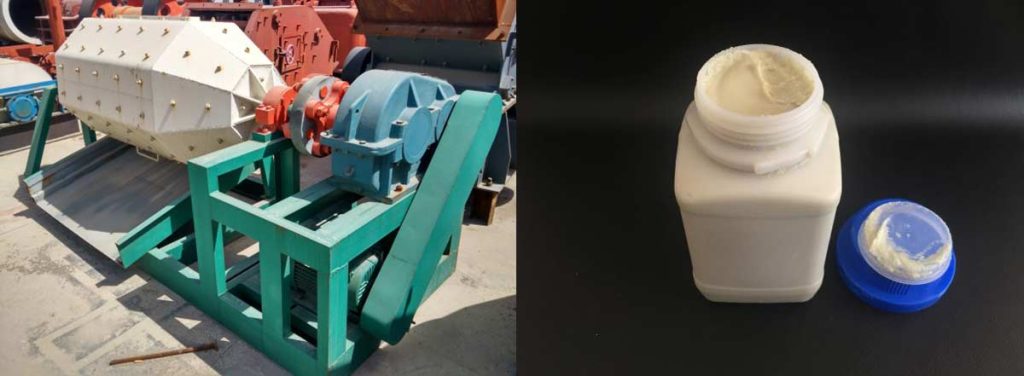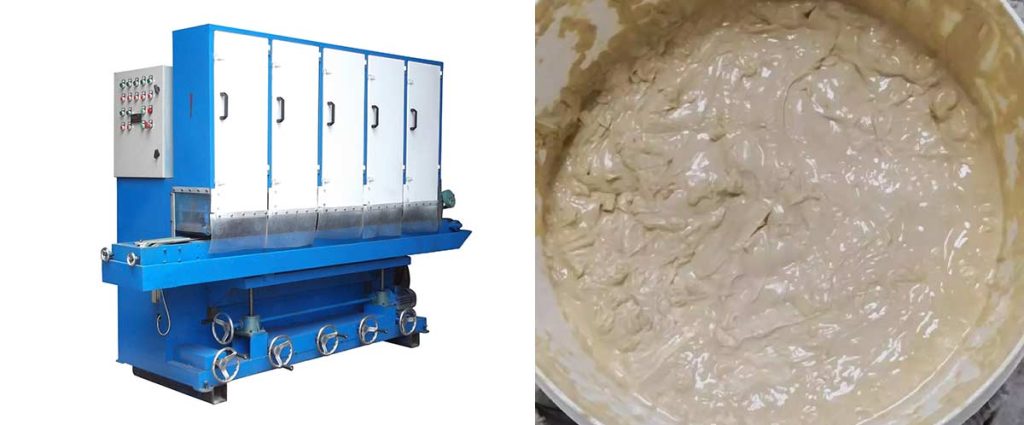

Dimensional accuracy plays a vital role in the production of plastic models, ensuring that every component fits together seamlessly. Achieving this precision often depends on controlling factors like warpage and shrinkage. Studies highlight the impact of parameters such as packing pressure and melt temperature in reducing these defects, which directly influence the final quality of models. Polishing compound for plastic models becomes essential in this process, as it smooths surfaces and minimizes imperfections that could distort dimensions. By refining the model’s finish, these compounds ensure that even the smallest details align with design specifications.
Key Takeaways
- Getting the right size and shape is important for plastic models. This helps parts fit and work correctly.
- Polishing compounds make surfaces smooth and fix flaws. This improves how the model looks and fits.
- Pick the right polishing compound based on the plastic type and finish you want. Test it on a small spot first.
- Take care of your tools, like plastic polishing machines, to get good results and make them last longer.
- Using good polishing methods can make your plastic models look better and fit more accurately.
Dimensional Accuracy in Plastic Models
What Is Dimensional Accuracy?
Dimensional accuracy refers to how closely a manufactured plastic model matches its intended design specifications. It ensures that the model’s dimensions, such as length, width, and height, align with the original blueprint. Several factors influence this accuracy:
- Under or over-extrusion during the manufacturing process can cause parts to deviate from their intended size.
- Thermal contraction, especially in larger models, may lead to noticeable shrinkage.
- The extrusion multiplier, which controls material flow, must be calibrated correctly to avoid oversized or undersized parts.
- Horizontal size compensation allows for fine adjustments to correct consistent dimensional errors.
- The nozzle’s position during the first layer significantly impacts the accuracy of subsequent layers.
Careful calibration and adjustments during production help minimize these issues, ensuring the final model meets its design requirements.
Why Dimensional Accuracy Matters for Plastic Models?
Dimensional accuracy plays a critical role in the functionality and performance of plastic models. Poor accuracy can result in parts that fail to fit together properly, compromising the model’s structural integrity. A study on 3D-printed models highlights the consequences of inaccuracies, such as discrepancies between the design and the final product. These errors can affect the mechanical properties and overall functionality of the model.
For example, if a model’s components are too large or too small, assembly becomes challenging. This issue is particularly problematic for models requiring precise interlocking parts, such as gears or joints. Additionally, inaccuracies can lead to wasted materials and increased production costs. By prioritizing dimensional accuracy, manufacturers can ensure that their models not only look good but also perform as intended.
Polishing Compound for Plastic Models: Enhancing Precision
Key Properties of Polishing Compounds
Polishing compounds are essential tools for achieving precision in plastic models. Their effectiveness depends on specific material properties and chemical compositions. These compounds are designed to remove surface imperfections while maintaining the integrity of the model’s dimensions. Key properties include abrasiveness, particle size, and chemical stability. Abrasiveness determines how effectively the compound can remove material, while particle size influences the smoothness of the final surface. Chemical stability ensures that the compound does not react adversely with the plastic material.
Different types of polishing compounds cater to various needs. For instance, CVC-135, a cerium oxide-based slurry, is known for its fast removal rate and ability to produce excellent surface finishes. This makes it ideal for applications requiring high precision. Similarly, Acceleron, a high-purity aluminum oxide compound, delivers exceptional surface quality and high removal rates, making it versatile for different surfaces. HASTILITE 919, a blend of zirconium and cerium oxide, is engineered for advanced optics and achieves extremely low surface roughness. These examples highlight how the right compound can significantly enhance the quality of plastic models.
How Polishing Compounds Contribute to Smoothing and Accuracy?
Polishing compounds play a crucial role in achieving smoother surfaces and dimensional accuracy in plastic models. By removing microscopic imperfections, these compounds ensure that the model’s surface aligns with design specifications. Smoothing the surface reduces irregularities that could distort dimensions, ensuring that parts fit together seamlessly.
The process of polishing involves the gradual removal of material from the surface. Compounds like CVC-135 and Acceleron excel in this regard due to their high removal rates. They allow for precise control over the amount of material removed, which is critical for maintaining dimensional accuracy. Additionally, compounds such as HASTILITE 919 are specifically formulated to achieve ultra-smooth finishes, making them ideal for intricate designs and complex geometries.
Polishing compounds also enhance the visual appeal of plastic models. A smooth, polished surface not only improves functionality but also elevates the model’s aesthetic quality. This is particularly important for display models or prototypes where appearance matters as much as performance. By using the right polishing compound for plastic models, manufacturers can achieve both precision and visual excellence.

Methods and Tools for Polishing Plastic Models
Manual Polishing Techniques
Manual polishing techniques offer a hands-on approach to refining plastic models. These methods rely on tools such as sandpaper, polishing cloths, and abrasive pads to achieve smooth surfaces. Sanding plays a critical role in this process, as it removes rough edges and prepares the model for further refinement. Using progressively finer grits of sandpaper ensures that the surface becomes smoother with each step. For instance, starting with 400-grit sandpaper and gradually moving to 2000-grit provides optimal results.
Polishing techniques often involve circular motions to evenly distribute pressure and avoid uneven surfaces. Applying a polishing compound during manual sanding enhances the smoothing effect, ensuring dimensional accuracy. This approach works well for small models or intricate designs where precision is essential. While manual methods require patience and skill, they offer excellent control over the sanding and polishing process, making them ideal for hobbyists and professionals alike.
Tip: Always clean the model thoroughly before starting manual polishing to prevent debris from scratching the surface during sanding.
Using a Plastic Polishing Machine for Smoothing
Plastic polishing machine provides an efficient and consistent way to smooth surfaces. The machine uses mechanical polishing methods to achieve high precision, making them suitable for larger models or projects requiring uniform results. Mechanical polishing can achieve Ra values ranging from 0.01μm to 0.2μm, while electropolishing delivers even finer finishes with Ra values below 0.05μm.
| Polishing Method | Ra Value Range |
|---|---|
| Mechanical Polishing | 0.01μm to 0.2μm |
| Electropolishing | 0.05μm and below |
Plastic polishing machine often features adjustable settings to control speed and pressure, allowing users to tailor the process to their specific needs. These machines excel in smoothing complex geometries and large surfaces, ensuring dimensional accuracy without compromising the model’s integrity.
Note: Regular maintenance of polishing machines, such as cleaning and lubricating moving parts, ensures optimal performance and extends their lifespan.
Selecting the Right Polishing Compound for Your Model
Choosing the appropriate polishing compound is crucial for achieving the desired finish and maintaining dimensional accuracy. Factors such as the type of plastic, the model’s complexity, and the level of smoothing required influence the selection process. Polishing compounds vary in abrasiveness, chemical composition, and application methods, making it essential to match the compound to the model’s needs.
| Product Name | Description |
|---|---|
| M105 Meguiar’s Mirror Glaze Ultra-Cut Compound | Effective for a wide range of paintwork blemishes, made with super-micro abrasives for a smooth finish. |
| Chemical Guys V36 Optical Grade Cutting Polish | Intermediate polish that removes light to moderate defects while adding gloss, using diminishing abrasive technology. |
| Griot’s Garage Complete Compound | User-friendly with medium-cut capabilities, designed for efficiency and safe for all types of automotive paints. |
For plastic models, compounds like M105 Meguiar’s Mirror Glaze Ultra-Cut Compound work well for removing surface imperfections while preserving dimensional accuracy. Chemical Guys V36 Optical Grade Cutting Polish offers a balance between defect removal and gloss enhancement, making it suitable for intermediate polishing methods. Griot’s Garage Complete Compound provides a user-friendly option for beginners, ensuring safe and efficient sanding and polishing.
Tip: Test the polishing compound on a small, inconspicuous area of the model before applying it to the entire surface to ensure compatibility.
Best Practices for Using Polishing Compounds
Preparing Plastic Models for Polishing
Proper preparation ensures effective smoothing and finishing during post-processing techniques. Start by cleaning the model thoroughly to remove dust, grease, or debris that could interfere with sanding or polishing. Use a mild detergent or isopropyl alcohol for cleaning, depending on the type of plastic. Inspect the surface for visible imperfections, such as scratches or uneven areas, and address them using coarse sandpaper.
When sanding, industry experts recommend changing the angle of each finer grit stone to eliminate marks left by the previous grit. Begin with coarser diamond compounds applied at a slow speed to remove deeper imperfections. Gradually progress to finer grades for enhanced aesthetics and uniform finishes. This step-by-step approach ensures that the model is ready for vapor smoothing or polishing without compromising dimensional accuracy.
Tip: Always test the preparation method on a small section of the model to avoid unexpected damage.
Effective Application Techniques
Applying polishing compounds effectively requires understanding the differences between methods. Manual techniques, such as using solid bar compounds, involve pressing the bar onto a buffing wheel. While this method works for small-scale projects, it may lead to inconsistent results and safety risks. Automatic bar feeders offer a safer alternative, ensuring uniform application and increasing productivity by up to 50%.
Liquid buffing compounds provide another option, applied through low-pressure or high-pressure systems. Low-pressure systems are simple but can waste material due to throw-off. High-pressure systems penetrate air turbulence effectively, delivering better smoothing and finishing results. For 3D printed parts, high-pressure systems are particularly useful in achieving uniform finishes across complex geometries.
Note: Perform test runs with different methods to identify the most suitable technique for your model.
Maintaining Tools Like Plastic Polishing Machine

Regular maintenance of plastic polishing machine ensures optimal performance and prolongs the lifespan. Cleaning the equipment after each use prevents residue buildup that could affect smoothing efficiency. Operators should perform daily checks, minor adjustments, and lubrication to keep the machine in good condition.
Data collection on equipment downtime helps identify recurring issues and informs maintenance strategies. For example, inspecting critical components for wear and damage allows timely replacements, avoiding disruptions during post-processing techniques. Proper storage of tools and adherence to disposal guidelines for polishing compounds also contribute to maintaining uniform finishes and dimensional accuracy.
| Maintenance Practice | Description |
|---|---|
| Regular Cleaning | Thorough cleaning and inspection of components for wear and damage. |
| Operator Involvement | Daily checks, minor adjustments, and lubrication enhance upkeep. |
| Data Collection | Identifying recurring issues through downtime data improves strategies. |
Tip: Schedule periodic professional inspections to ensure machines remain in peak condition.
Conclusion
Dimensional accuracy remains a cornerstone of successful plastic model production. Polishing compounds play a pivotal role in achieving highly accurate results by refining surfaces and ensuring components align with design specifications. Their application not only enhances functionality but also elevates the visual appeal of models.
Adopting best practices, such as proper preparation, effective application techniques, and regular tool maintenance, ensures consistent results. Precision control measures further improve outcomes, as shown below:
| Precision Control Measures | Impact on Dimensional Accuracy and Surface Finish |
|---|---|
| High-precision machine tools with advanced calibration systems | Ensures tight tolerances and improved accuracy |
| Systematic tool checks and timely replacements | Maintains consistent quality and reduces errors |
| Controlled room temperature for stable machining conditions | Enhances precision during the machining process |
| Live dimensional verification systems | Allows for immediate corrections and quality assurance |
Exploring tools like 3d polishing machines and experimenting with various compounds can unlock new levels of precision. By combining these strategies, manufacturers and hobbyists alike can achieve exceptional results in their projects.
